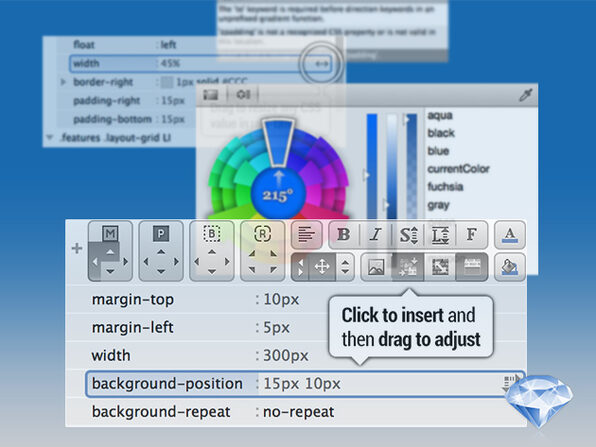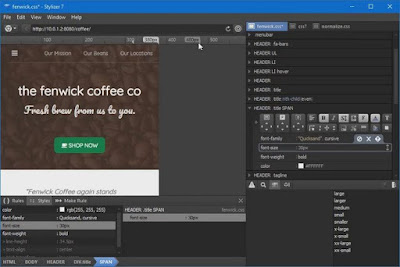

Save the styles.css file and return to your index.html file. before the class selector as required when declaring CSS rules for classes.
#Css stylizer code
In this code snippet, you have created styling rules for three different classes: div-1, div-2, and div-3. To practice creating classes for elements, erase the CSS rule you just created and add the following new three CSS rulesets to the styles.css file. For this reason, developers often create classes that they can use to style elements in different ways. However, when creating a website, it is unlikely that you will want all of your HTML elements to be styled in the same way. Now that you have a styling rule for your element, every element you add to your page will be styled in the precisely the same manner. Your webpage should display a green box 100 pixels wide and 100 pixels tall as specified by the CSS rule:
#Css stylizer how to
(For instructions on loading an HTML file, please visit our tutorial step How To View An Offline HTML File In Your Browser). Save the index.html file and reload it in your browser. Notice that the element has opening and closing tags but does not require any content. Next, add the following CSS rule for the tag selector: Erase everything in your styles.css file (if you added content from previous tutorials). Let’s try a hands-on exercise to study how the element works.
#Css stylizer series
To follow this tutorial, make sure you have set up the necessary files and folders as instructed in a previous tutorial in this series How To Set Up You CSS and HTML Practice Project. To specify the size, color, and other properties of a element, you can assign it style rules using CSS. On its own, the element typically has little visual effect on the presentation of a webpage.

The element is used by adding opening and closing tags to an HTML document. These skills will prepare you to use elements as layout tools later on in the series when you begin recreating the demonstration website. In this tutorial, you will create and style elements, as well as learn how to add and style other elements inside a container. The element can be used to structure the layout of a page and break up a webpage into separate components for individual styling. See nib for an example.This tutorial will introduce you to styling the HTML Content Division element-or element-using CSS. Just create a module, which exports a single function to be called by stylus'. To include them, list their module names in the plugins option. Stylizer supports stylus plugins like nib. This means css will autorefresh without a page reload, which is great for development/prototyping.Ĭurrently, watch should be a glob matching your stylus files that you want to be watched, e.g: /path/to/stylus/files/**/*.styl.

If development: true and watch: is defined, live reload events will be sent to connected browsers running the livereload chrome extension.


 0 kommentar(er)
0 kommentar(er)
